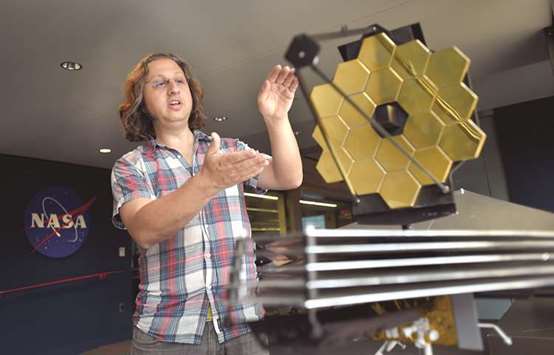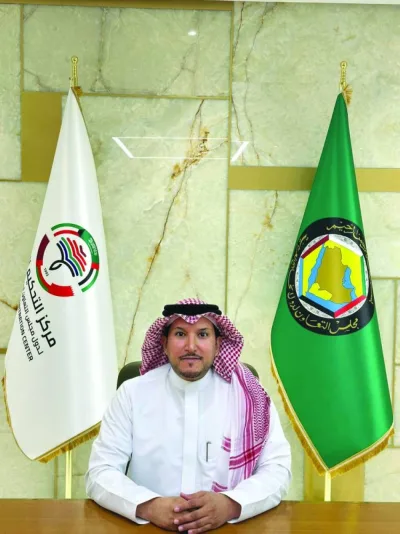As the James Webb Space Telescope looks toward the farthest reaches of the universe, it will take direction from a glass-encased room of computer monitors that looks out on Baltimore’s leafy Wyman Park.
The images the observatory beams back will be processed and shared with the world from offices just down the hall and up the street.
As anticipation builds ahead of the Webb telescope’s October 2018 launch, Baltimore scientists are readying the facilities, equipment, software and personnel that will serve as its eyes and brain on Earth.
Researchers at the Space Telescope Science Institute on the edge of the Johns Hopkins University campus will guide the process of deciding where to point the telescope and what to study, as they now do for the Hubble Space Telescope.
Institute engineers will hold the reins, radioing instructions to the telescope 1 million miles away and downloading hundreds of gigabits of data every day.
“Two minutes after launch, it’ll be the nerve centre,” said Joel Green, a project scientist in the institute’s office of public outreach.
For the institute, operated for Nasa by the Association of Universities for Research in Astronomy, the responsibility is heavy but familiar. From 1999 to 2006, it ran both Hubble’s scientific endeavours and its operations. In 2006, the control room moved down the Baltimore-Washington Parkway to the Nasa Goddard Space Flight Center in Greenbelt.
With less than a year and a half to go before Webb’s honeycomb-shaped mirror and tennis court-sized sun shield are folded up, loaded onto a rocket and hurled into space, preparations are accelerating. The telescope’s mirror and instruments, constructed at Goddard over the past few years, will head soon to the Nasa Johnson Space Center in Houston for the next phase of testing.
A collaboration of Nasa, the European Space Agency and the Canadian Space Agency, the telescope is to be launched from French Guiana aboard a European Ariane 5 rocket.
In Baltimore, some of the last equipment and software needed for the launch arrived on the second floor of the institute’s San Martin Drive headquarters in January. Scientists are busy testing them and learning how they will use them in the big moments to come.
“We’re conducting rehearsals as though it was launch day,” said Rusty Whitman, flight operations system engineering manager. “We will do that over and over again just like rehearsals for a play. Everyone has a part to play, and everyone has to know their lines.”
Webb is the next-generation telescope that has been in planning since Hubble’s earliest days in space more than 25 years ago. Where Hubble, launched in 1990, dramatically transformed understanding of the universe and its history, Webb is designed to see at far greater distances, and with greater sensitivity and clarity.
Scientists are hopeful Hubble will remain operational well into Webb’s mission, so that when the new telescope discovers objects of interest, Hubble can follow along. Working together, with their complementary designs and strengths, the two telescopes are expected to again rewrite astronomy books.
Astronomers around the world already are brainstorming the research they will be able to pursue — watching the formation of young galaxies, probing around black holes, searching for and exploring Earthlike planets. They are sharing their ideas with scientists at the Baltimore institute, which will co-ordinate the telescope’s order of observations.
The start of that exploration is still about two years away. Once Webb leaves Earth, it is scheduled to take six months to unfold, reach its orbit, boot up and get aligned for operation.
But given the complexity of the launch and the mission, crunch time is already arriving for the institute’s crew.
About 150 people in Baltimore are expected to staff the launch. One hundred will remain based in the flight operations centre and adjoining control rooms 24 hours a day, seven days a week during Webb’s six-month commissioning, Whitman said.
That requires training a lot of people. The institute employs about 700, spread across its headquarters, its offices at Hopkins’ Physics and Astronomy Building across San Martin Drive and at the Stieff Silver Building and the Rotunda in Hampden.
“We cross-train a lot of people,” Whitman said. “We have at least one backup, if not more, for each role.”
If anyone leaves their job, the scientists will have to get someone new up to speed quickly. But most are so dedicated to the long-awaited mission and eager to see it through, Whitman said, that “turnover is not usually a big problem.”
Testing is already underway to ensure there is no difficulty communicating with the Deep Space Network, Nasa’s set of 230-foot-tall antennas in California, Spain and Australia. The network will be in constant communication with Webb during its commissioning. It will eventually cut that contact down to two four-hour exchanges each day.
The institute is also readying for the masses of data Webb will send back, with plans to store the information in basement servers while exploring other big data solutions, Green said.
It performed a similar function for Hubble from 1999 to 2006. This time around, Webb will transmit hundreds of times more data.
Eric Smith, programme director for Nasa, said the space agency decided years ago to locate the primary mission operations centre at the Baltimore institute for reasons of efficiency.
“The idea was to have the end-to-end missions operations within one organisation … to streamline things and reduce costs,” he wrote in an e-mail.
The institute’s past leaders have downplayed the importance of hosting the control centre. When it was shifted south to Goddard in 2006, Bruce Margon, then the institute’s associate director for science, told The Baltimore Sun the move was of “essentially no significance.”
Given the speed and ease of electronic communication, there is less of a case for combining Webb’s scientific and operational headquarters than there was with Hubble, said Robert Williams, the institute’s director from 1993 to 1998. But it is still easier when in-person meetings are required, he said.
“We spend an awful lot of time on the parkway between here and Goddard,” Williams said.
Other scientists said it will be valuable to have the engineers guiding the telescope and the astronomers using it in the same place. After all, for the engineers, Whitman said, “their whole reason to be here is to support the science.”
And there is also symbolic meaning. “It feels like the heartbeat of JWST will be in the building,” Summers said. —The Baltimore Sun/TNS

HOLDING FORT: Joel Green, an astrophysicist, talks about how the James Webb Space Telescope works as he stands next to a model of it in Baltimore in April at the James Webb Space Telescope flight control room at the Space Telescope Science Institute. It is where scientists will launch commands to the telescope once it reaches space in late 2018 and early 2019. The telescope is the successor to the Hubble Space Telescope and is expected to give new views of and insights into the early universe.


